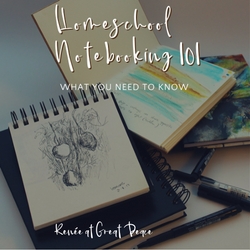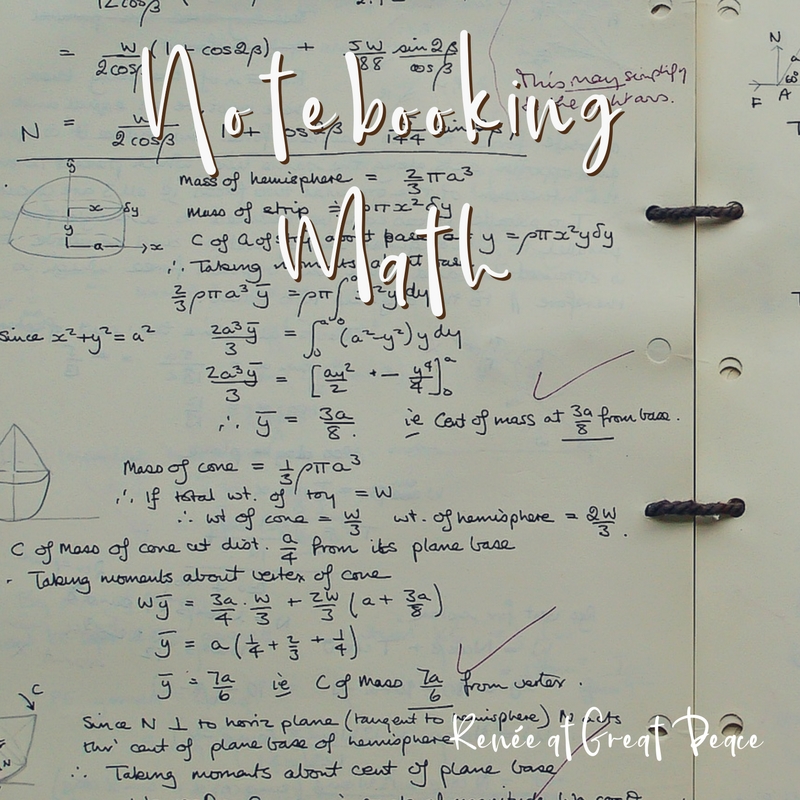
Homeschool Notebooking 101 What You Need to Know
Notebooking, It’s much Easier than You Think
Notebooking is one of those terms that you might hear often in homeschooling circles. If you are new to education at home, or, you’ve been homeschooling in a traditional way, you may not be aware of what homeschool notebooking is, and how simple it is to incorporate it into your homeschool routine.
This post contains affiliate advertisement links to 3rd party sites where products purchased may result in paid compensation for this blogger.
What is Notebooking?
Notebooking in it’s simplest form is journaling what a child learns. The beauty of notebooking is that it’s progressive. As a child learns, they document, in their own way. Whether they are most comfortable with drawing what they learn, or writing what they learn, a journal truly becomes the child’s work. By combining the work into a notebook, or journal, your child subsequently creates a complete work showing their scope of education.
This work can become a child’s educational scrapbook treasure or it can serve as an easy way to document learning for portfolio assessments. It can also be just a simple way for your child to watch their own progress. As they flip back through a book, they will discover remembrances of skills, lessons, and knowledge that they have obtained.
Notebooking is not a new concept. Probably, the most famous person to utilize notebooking is Leonardo da Vinci. Lewis and Clark also famously documented their travels and discoveries in this way. And of course we know of John James Audubon’s nature notebooks.
It has been used through the ages in many methods of education. In fact, when my dad and I were cleaning out my mamaw’s house, we found several notebooks that she used (as an adult) to journal her Bible studies. Which made me realize that many people utilize notebooking in a variety of ways, myself included. It’s a simple way to chronicle information.
Regardless of age, a journal can be put together showing progress in education. This can be done in a variety of methods and there are a plethora of resources available online with a large variety of them being attainable for free.

Notebooking Pre-writing
For younger children to use notebooking is easy, a child can simply draw pictures of what they learn. If mom reads the child a story, the child can draw a picture while mom is reading. If a child is learning the alphabet they can practice writing their letters, or doing ABC or number copywork.
How to Utilize Notebooking
First, I want to say that there are no “rules” when it comes to notebooking. In fact, that’s the beauty of it. There are no right ways to do it, and there are no wrong ways to do it. Whatever works for your child, your homeschool, your family, that is the best way to utilize notebooking. The one thing to note, is that notebooking isn’t about a child completely a worksheet. It’s about allowing the child to document in their own way, what they have learned.
That being said, here are some suggestions for how to utilize notebooking in your homeschool.
- Binder Notebooking – Use a binder to organize pages that your child is working on or have completed. You can use a single binder per subject or a single binder per school year divided within by subject. By utilizing printables found online, you can fill up your child’s notebook and then as the child learns offer them a scheduled time to work within their notebook to document their learning. Many believe it’s important to add in one completed page at a time, but if
- Notebook Notebooking – You can utilize a simple spiral bound notebook, or composition notebook and allow your child to draw pictures of what they are learning, or write out stories, or jot down notes of the materials they are researching.
Types of Notebooking by Subject
- Copywork Notebooking – Copywork is an excellent way for students to learn writing skills, grammar skills, memorization and copywork materials can also be illustrated, allowing the student to truly make the work their own. You can simply pre-write the materials you want to be copied, or you can find excellent printables online and one at a time, add them to your binder notebooks.
- Art Notebooking – Art notebooking can be done in 2 ways. The first is just as it sounds, notebooking or journaling the art that your students do everyday. Whether it’s their art for fun, or art for school, simply allowing them to add their art to a notebook creates a beautiful journal of their work. If your child does 3 dimensional art work, you can take photos of their work, and add the photo to the journal. I did this with my son’s LEGO creations.
The second way is to utilize notebooking pages for art is to allow students to draw, or create artwork for the subjects and lessons they are learning. This is especially helpful for young children or emergent writers.

- Story Notebooking – Story notebooking is just that, allowing students an opportunity to tell their story. Telling the story of what they have learned. They tell it in their own words.
- History/Geography Notebooking – In my opinion, notebooking is the ideal way to chronicle historical and geographical studies. Students can add timelines, maps, notes, drawings and more to their notebooks as a way to collect information about eras, or as a way to provide for themselves an overview of history.
- Science Notebooking – Science notebooking is just that, a student can utilize a notebook to record their scientific study, research, experiments and chronicle their scientific method. Whether your student simply takes notes, sketches and record information, or you utilize printable materials or existing pre-printed notebooks, notebooking provides a way for students to sum up a large amount of information into small absorbable chunks of information.
- Nature Study Notebooking – This is a great way for students to sketch, take notes, and register their observations while doing studies in and about nature.
- Math Notebooking – Honestly, it wasn’t until recently that this thought even occurred to me. But, it came to me because my son began to notebook his math notes. See, he loves math. He consumes it like most of us consume food.

One day I discovered his desk full of pages and pages and pages of notes he had been taking while he was doing geometry. He would do his online lesson and as the instructor was teaching, he’d be taking copious notes. Now to me… those notes were not at all organized. But to him, he knew exactly where to find each note at just the right time that he needed it.
So I helped him organized them into binders and he continues to notebook his math notes.
- Project or Research Notebooking – As students grow older and begin to research and learn through projects, notebooking provides a simple solution for gathering information, dissecting that information into usable chunks, creating first drafts, second drafts, and working toward completion of a final project or research paper.
Oh, by the way, notebooking works for a lot of areas of life, family journaling, church Bible classes, crafting and children’s art, scrapbooking, the possibilities are endless.
Free Download 10 Pages of Notebooking Pages
Because I love using notebooking pages in homeschool, and I think you will too, I created these 10 FREE Notebooking Pages. Their easy to use, just print as many as you need for your homeschool, hand one to your child following a lesson, and have them illustrate and document what they’ve learned.
Download your Free Printable Notebooking Pages
Where You Can Find Notebooking Resources
Printable Pages – Printable pages abound on the internet, many free. Finding notebooking pages can be accomplished with a simple search. I’m going to share with you my favorite places to find notebooking pages.

-
- Donna Young.org Notebooking Forms
- Free Printables from Notebooking Fairy
- Notebooking Pages Free Resource Center
- Notebook Page Templates from Blessed Learners
- Notebooking Pages from Crafty Classroom
My Pinterest Board
Notebooking Supplies
For even more information about ideas take a look at Sara’s post Why and How to Start Homeschool Notebooking at Classically Homeschooling.
What do you think? Are you ready to give notebooking a try? Or, are you a seasoned notebooking family? If so, share your tips and tricks in comments so others can learn from your experience.

This post is a part of the iHomeschool Network Back to School Link Round Up.
This post is part of the iHomeschool Network Resources for Homeschool Moms (available 10/12/15).

You May Also Enjoy













7 Comments
Meredith
Renee, I love this – we have used notebooking in many of the ways you have described over the years, always fun to look back on my kiddos entries and see how they have developed their writing and inclusions over the years 🙂
Meredith recently posted…What’s in Your Morning Basket? {Homeschool Morning Time, and More}
Renee Aleshire Brown
Yes I agree. Just this past week I was visiting my own mom and stumbled upon her reading her Bible, it’s still a powerful example to me and reminder of MY role in my son’s life. Live the example we want to be!
Renee Aleshire Brown
Meredith, yes! So fun to go bac and see how far they’ve come!
Pingback:
Pingback:
Sarah
It turns out I’ve already been Notebooking! Throughout every homeschool year I have my 4 children put any school page for art, copywork or writing assignment, etc. into a notebook. I like the idea of making it a little easier on the eyes through stickers or drawings etc. I’ve used it for an organizational tool up until now. I’m looking forward to using it as a motivator for them to record what they’ve learned. Great post, thanks!
Renee
That’s awesome Sarah! It’s such a natural way of documenting and allowing children to explore their own education.